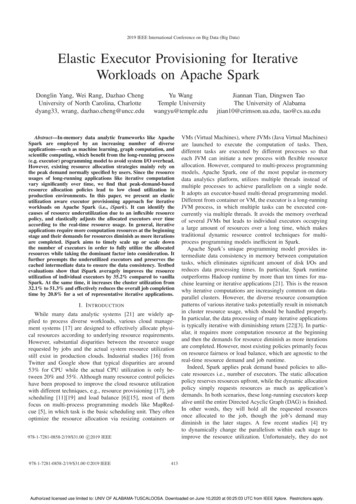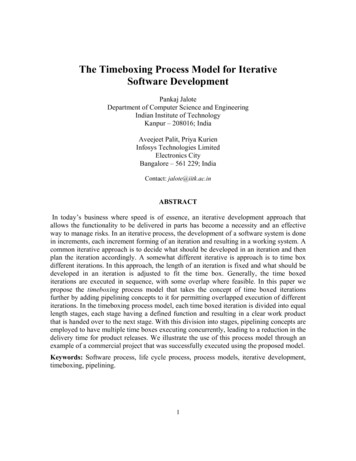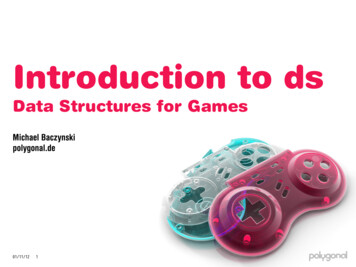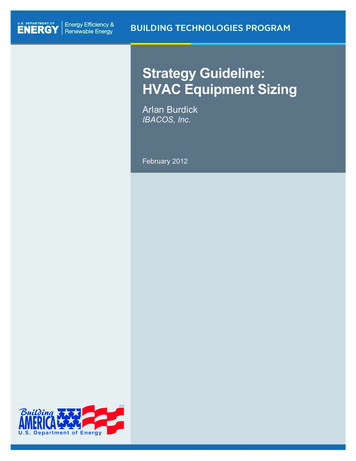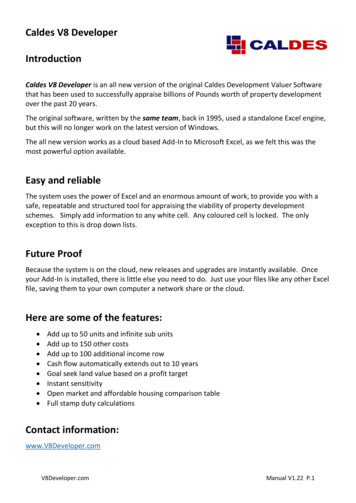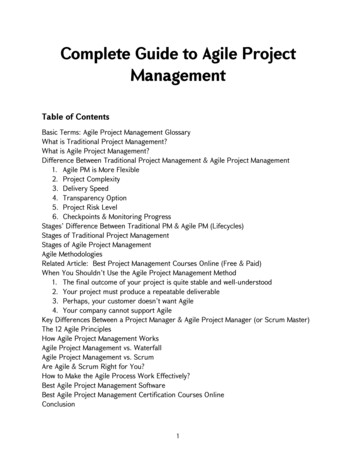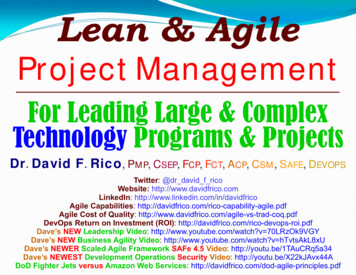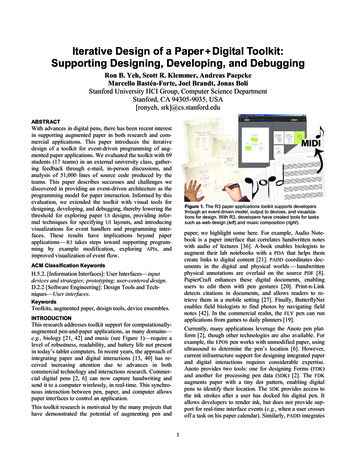
Transcription
Iterative Design of a Paper Digital Toolkit:Supporting Designing, Developing, and DebuggingRon B. Yeh, Scott R. Klemmer, Andreas PaepckeMarcello Bastéa-Forte, Joel Brandt, Jonas BoliStanford University HCI Group, Computer Science DepartmentStanford, CA 94305-9035, USA[ronyeh, srk]@cs.stanford.eduABSTRACTWith advances in digital pens, there has been recent interestin supporting augmented paper in both research and commercial applications. This paper introduces the iterativedesign of a toolkit for event-driven programming of augmented paper applications. We evaluated the toolkit with 69students (17 teams) in an external university class, gathering feedback through e-mail, in-person discussions, andanalysis of 51,000 lines of source code produced by theteams. This paper describes successes and challenges wediscovered in providing an event-driven architecture as theprogramming model for paper interaction. Informed by thisevaluation, we extended the toolkit with visual tools fordesigning, developing, and debugging, thereby lowering thethreshold for exploring paper UI designs, providing informal techniques for specifying UI layouts, and introducingvisualizations for event handlers and programming interfaces. These results have implications beyond paperapplications — R3 takes steps toward supporting programming by example modification, exploring APIs, andimproved visualization of event flow.Figure 1. The R3 paper applications toolkit supports developersthrough an event-driven model, output to devices, and visualizations for design. With R3, developers have created tools for taskssuch as web design (left) and music composition (right).paper; we highlight some here. For example, Audio Notebook is a paper interface that correlates handwritten noteswith audio of lectures [36]. A-book enables biologists toaugment their lab notebooks with a PDA that helps themcreate links to digital content [21]. PADD coordinates documents in the digital and physical worlds — handwrittenphysical annotations are overlaid on the source PDF [8].PapierCraft enhances these digital documents, enablingusers to edit them with pen gestures [20]. Print-n-Linkdetects citations in documents, and allows readers to retrieve them in a mobile setting [27]. Finally, ButterflyNetenables field biologists to find photos by navigating fieldnotes [42]. In the commercial realm, the FLY pen can runapplications from games to daily planners [19].Currently, many applications leverage the Anoto pen platform [2], though other technologies are also available. Forexample, the EPOS pen works with unmodified paper, usingultrasound to determine the pen’s location [6]. However,current infrastructure support for designing integrated paperand digital interactions requires considerable expertise.Anoto provides two tools: one for designing Forms (FDK)and another for processing pen data (SDK) [2]. The FDKaugments paper with a tiny dot pattern, enabling digitalpens to identify their location. The SDK provides access tothe ink strokes after a user has docked his digital pen. Itallows developers to render ink, but does not provide support for real-time interface events (e.g., when a user crossesoff a task on his paper calendar). Similarly, PADD integratesACM Classification KeywordsH.5.2. [Information Interfaces]: User Interfaces—inputdevices and strategies; prototyping; user-centered design.D.2.2 [Software Engineering]: Design Tools and Techniques—User interfaces.KeywordsToolkits, augmented paper, design tools, device ensembles.INTRODUCTIONThis research addresses toolkit support for computationallyaugmented pen-and-paper applications, as many domains—e.g., biology [21, 42] and music (see Figure 1)—require alevel of robustness, readability, and battery life not presentin today’s tablet computers. In recent years, the approach ofintegrating paper and digital interactions [13, 40] has received increasing attention due to advances in bothcommercial technology and interactions research. Commercial digital pens [2, 6] can now capture handwriting andsend it to a computer wirelessly, in real-time. This synchronous interaction between pen, paper, and computer allowspaper interfaces to control an application.This toolkit research is motivated by the many projects thathave demonstrated the potential of augmenting pen and1
Figure 2. In this high-level overview of the R3 architecture, note how input arrives from pens and paper, and output is sent to devices. R3lowers the threshold for processing real-time and batched pen input, and dispatches events to the handlers created by the developer. R3services are flexibly coupled, so they can be used separately from the toolkit. On the lower right, we see the debugging tools that we implemented in response to user feedback and our analysis of the source code developers produced.handwritten annotations back into digital documents [8],but does not support event handling. iPaper provides realtime retrieval of media associations [34], yet requires significant centralized infrastructure to handle requests.We address this steep learning curve by taking a usercentered approach to designing a paper digital toolkit.Specifically, this research demonstrates that providing toolsto help designers explore different solutions, and iterativelyimprove upon them, can lower the threshold for creatingapplications [24] and provide wider walls for exploring thedesign space [33]. With effective tools, designers can bettersupport mobile computing through digital paper.This paper presents the R3 paper applications toolkit. Itsgoals are to reduce the time required for designers to createprototypes, to support the reuse of components throughinspection and copying, and to help developers recycle andcustomize old solutions for new usage contexts. To supportthe large community of designers familiar with graphicalinterfaces, R3 introduces the GUI’s event-driven and modelview-controller architectures [16] to augmented paper applications. Beyond lowering the learning threshold, R3contributes methods to:y Specify paper user interfaces and event handlers bysketching with an inking pen on physical paper.y Integrate the development process with visualizationsof the UI and event handlers to aid in debugging.y Explore custom coding solutions through a direct manipulation API browser that generates source code.The R3 toolkit enables designers to create rich paper-centricapplications (see Figures 2). To do this, R3 builds upon theAnoto platform to support interactions with pen and paper.With Anoto, an inking pen reads a location-specifying dotpattern printed on a paper page. This enables R3 to receivethe location, force, and time of each pen stroke either inreal time (through Bluetooth) or in batched mode (after theuser docks his pen).To evaluate R3’s architecture, we deployed the toolkit to anundergraduate HCI class of 69 students (17 teams). Throughanalysis of the students’ source code, we found that R3provided a low threshold for programmers to create paperuser interfaces. Moreover, we found that developers:y Used programming by example modification to speedtheir development with new frameworks (such as R3).y Had cognitive difficulty in selecting and composingvisual operations on digital ink.y Depended on debugging output to iteratively growtheir applications.We also discovered limitations of the R3 approach, primarily concerning the speed at which a designer could exploreand test designs. In response to these findings, we introduced visual design, development, and debugging tools tosupport rapid exploration. In the following section, wehighlight R3’s architectural features, and describe how adeveloper uses it to create pen-and-paper applications. Wethen describe our evaluation of the toolkit, through bothinternal use and external deployment. We detail observations from the deployment, and describe how we appliedresulting design implications to a second iteration of R3. Toconclude, we frame our contributions in related work andsuggest future directions.THE PAPER TOOLKIT ARCHITECTUREIn providing toolkit support for pen-and-paper interfaces,our goal was to augment, and not replace, developers’existing practices. For this reason, we modeled R3’s architecture after event-driven GUI architectures, such asWindows Forms [22] and Java Swing [38]. R3 receivesinput from one or more digital pens, and invokes eventhandlers attached to active regions on a paper interface (seeFigure 2). This approach, which draws on traditional GUIidioms, eases the development transition between graphicaland augmented paper interaction by providing existingdevelopers with a familiar programming model. On thewhole, this model is effective for paper digital interfaces.
However, the GUI architectural paradigm cannot be copiedwholesale to this domain because paper cannot itself present real-time graphical feedback; we introduce thechallenges to designing augmented paper interaction anddescribe how R3 addresses them.directly through the R3 Java API, or 3) use R3’s support formodel-based paper UIs, which separate an XML interfacespecification from the Java-based application logic. Thisapproach of using XML as an interface representation wasseen in [1, 26], and is used in, e.g., Mozilla’s XUL [23].Designing a Paper InterfaceEvent Handling with Multiple PensConsider this scenario: Karen would like to design a taskThe R3 architecture distinguishes itself from traditional GUImanagement application that will allow users to jot notes onarchitectures in two ways. First, analogously to research onpaper. After writing a note, the user will tap a dedicatedtoolkits for multiple mice (e.g., [10]), R3 handlers can receive input from multiple pens, determined through a PenIDrectangle at the bottom of the paper with his pen. Through ain the PenEvent. Applications that leverage this multipleBluetooth connection, a nearby computer will capture thepen functionality include Diamond’s Edge, a collaborativestrokes and add the note to the user’s digital calendar.drawing environment, and the Twistr game, a two-player,R3’s development process proceeds as follows: on a PC,bimanual interface where players use pens to tap photosKaren uses R3’s interface layout tool to create a Sheet obfrom a set on a large paper print (see Figure 3). In Twistr, aject (analogous to a Swing JFrame). Then, she creates onesingle pressed event is invoked when any of the four pens islarge Region to capture the user’s handwriting, and a smalldepressed. The handler requests the PenID, and rewards theRegion to act as an upload button (see Figure 2, left). Sheappropriate player for finding his photo.adds two Event Handlers: an ink collector to the large region, and a click handler to the small region. Karen thenProviding Feedback through Output Devicesprints the paper UI; R3 automatically renders Anoto patternThe second way that R3 differs from the traditional GUIon the active regions. When active, the ink collector rearchitecture is that interaction happens within a deviceceives the user’s strokes from the wireless connection.ensemble [31], where user actions are distributed acrossWhen the user taps on the paper button, Karen’s code repaper and computer (see e.g., [42]). To support this interactrieves ink from the ink collector (optionally passing ittion style, R3 provides feedback by invoking Actions onthrough handwriting recognition), renders it as a JPEG imdevices, such as a handheld display. These ensemble interage file, and uploads it to the user’s web calendar.actions are accomplished through a mobile code approach[39], passing Java as XML across a network. The programHowever, suppose that Jim, a graphic designer who doesmer instantiates a Device with a remote IP address. Thenot program, collaborates with Karen. In this case, Karenprogram can then ask the remote Device to invoke an Acoffloads the design of the paper UI to Jim. R3 allows Jim totion (e.g., OpenURL). Other than the computer’s host name,use any graphical tool to design the interface’s look-andR3 abstracts network details from the developer.feel. Jim and Karen can thus work in parallel. Jim can design the art in Adobe Illustrator, export to PDF, and use R3’sWith this approach, a pen-and-paper program can providedirect manipulation paper interface builder to add and namereal-time interaction across multiple devices. For example,interactive regions. Meanwhile, Karen can create the backin BuddySketch—an application we built to provide sharedend code. When Jim has finished, he provides Karen withsketching in video conferencing — each computer is a Dehis paper UI specification. Karen’s program reads in thevice, and in response to input on paper, one computer askspaper UI and attaches handlers to the named regions.its remote peer to update ink or display photographs.The R3 library provides many pen event handlers, includingDebugging and Testing with Event Save and Replayclick detectors, marking gesture interpreters, and handwritTo assist developers in debugging applications, R3 logsing recognizers (which use the recognition service, seen inFigure 2). The flexibility of R3’s event architecture allows developers to create their ownhandlers. When Karen and Jim print the paperinterface, R3’s print subsystem automaticallyinstruments regions containing handlers with theAnoto dot pattern. Lastly, with the printed UI inhand, they can test their application immediately.Overall, R3’s approach of separating interfacedesign from implementation augments existingpractices, as graphic artists can use familiar toolssuch as Adobe Illustrator to create the visualdesign of the paper UI. The paper UI developFigure 3. Left) Students used R3 to produce research such as Diamond’s Edgement process is also flexible, as the developer[3], a collaborative drawing environment integrating sketching on paper withmanipulations on a digital table. Right) The authors used R3 to explore largecan either 1) start from a PDF, 2) generate the UIpaper interfaces, including this Twistr game, which recognizes four pens.3
every PenEvent. A developer can replay this logged inputstream using the R3 GUI. Saving and replaying user inputoffers four benefits. First, logged input can be valuable inautomated unit testing of graphical user interfaces, traditionally a weakness in testing frameworks. Second,debugging with logged input is preferable because workingwith the same input produces consistent results across trials.Third, debugging with logged input is more efficient, as iteliminates the need to physically reproduce the input onevery occasion. Lastly, this architectural feature is usefulfor saving and later reviewing tests with end users.ImplementationThe R3 toolkit is primarily implemented with Java SE 6.0,with smaller components providing services to the maintoolkit. Pen input from the Anoto SDK is handled through aMicrosoft .NET 2.0 component, since the drivers are provided as Windows DLLs. As the “user interface” created byR3 is physical paper, there needs to be a printer-friendlyformat for these interfaces. To provide a system that iswidespread, flexible, and low threshold, we chose PDF: R3’spaper interface builder is implemented as an Adobe Acrobatplug-in; the interface can be augmented, and the dot patterns rendered, using the iText PDF library. Handwritingrecognition is built on Microsoft’s Tablet PC recognizer.DETERMINING NEEDS THROUGH LONG-TERM USEWe employed a mixed-methods approach to designing andevaluating R3. Our evaluation comprised three methods:building applications ourselves, observing its use in a class,and analyzing the source code developers produced. Eachapproach highlights distinct considerations; for example, indepth analysis of the code can help to improve the toolkit atthe API and architecture levels, whereas anecdotes fromlong-term usage may inform the design process as a whole.Over the last ten months, the architectural features of R3have evolved based on our desire to address three goals:Learnability How low is the threshold for learning tocreate useful paper interfaces? Which aspects of R3contributed to lowering this threshold, and which werebottlenecks to further lowering it?Extensibility What is the ceiling on the complexity ofapplications that experts can create? Which R3 aspectscontribute to this, and which prevent a higher ceiling?Explorability Will designers create a large variety ofapplications, utilizing a large variety of input techniques? How can R3 better support the ability fordesigners to rapidly create and test ideas?port our own research on large paper surfaces (GIGAprints)[41]. Diamond’s Edge and GIGAprints were presented as aposter and a video at Ubicomp 2006.One genre of concern that these projects highlighted wasthe need to support flexible input. To accomplish this, weabstracted the input architecture, creating a Pen interfacethat enables simultaneous input from multiple physicaldevices, and enables developers to implement their ownsubclass for the input technology of their choice. We alsofound that in multiple projects, developers needed to package incoming pen samples and interpret them as higherlevel user actions. While Anoto tools provide direct accessto x and y coordinates, our toolkit collects these into abstractions like clicks, gestures, and freeform ink.Observations of an External DeploymentWhile longitudinal use by experts (the authors and colleagues) offered insight on the ceiling of the platform’sflexibility and extensibility, use by novices (students atanother university) helped us understand R3’s accessibility.To observe on-the-ground use of the principles manifest inthe R3 toolkit, we provided it to an undergraduate HCI classat an external university (the authors were not part of theteaching staff). In this class, 69 students (17 teams) designed and built pen-and-paper projects. Students beganusing R3 in the eighth week of the fourteen-week class,after they had tested their early-stage paper prototypes [29].We summarize these projects in Figure 4. Project topicswere varied, including paper-based web design, personalorganizers, and sharing tools for news and blogs. Of the 17paper UIs created by these teams, 16 allowed the selectionof buttons or areas on the page. Only three accepted pengesture as input. Most applications were mobile (10 of 17),and four supported batched input.During the deployment, the first author held two in-personsessions at the university to answer questions and receivefeedback. He also responded to postings on the R3 newsgroup. In total, this comprised more than 20 hours ofproviding support and gathering feedback. After the semes-Feedback from Internal UseTwo students used an early version of R3 to develop Diamond’s Edge (see Figure 3), a drawing environment thatintegrates paper with digital tables [3]. This project comprised only 20 source files, leveraging R3 for capturinginput from multiple pens, rendering digital ink on a canvas,and sending drawings to printers. We also used R3 to sup-Figure 4. Summary of 17 class projects developed with R3. We seethat R3 supported a variety of projects (though three dealt withuniversity exams). Notice that while selection interactions werecommon (e.g., check a box), advanced interactions such as gestures were rare (e.g., draw a musical note). Notably, only four of theprojects implemented asynchronous interactions, where ink andactions are batch processed once the user returns to their desktop.
ter, we analyzed the project materials, including reports and sourcecode, to evaluate the successesand limitations of R3. This workdemonstrates that in-depth analysis of the products of a toolkit canbe used to inform the design ofthe toolkit itself.Figure 5. Teams used copy-and-paste to facilitate coding. Many times, developers would copya class file needed to get a program working, and then customize the skeleton to address theirOut of our analysis of the teamnew needs. Developers can benefit from tools that support this coding-by-growing behavior.materials, our notes from providing support, and analysis ofpatterns, provide evidence, and introduce designs that we50,962 lines of code, we identified three areas as opportuniadded to enhance these practices.ties for improved support: better debugging infrastructure,integrating batched and real-time interactions, and supportProgramming by Example Modificationfor web application platforms. While streaming supportOur first observation was that developers would copyworked well during development, operating the digital penschunks of source code, paste it into their project, and thenin batched mode—where data resides on the pen until it isgrow their application around this working base. This findsynchronized through a cable — can ease deployment ofing is consistent with earlier studies (e.g., [14, 30]). In ourmobile applications, as it eliminates the need for a PC withanalysis, we wanted to identify what types of code developin wireless range at runtime. Through the students’ writteners copied, how much they would copy at one time, andreports, it became clear that tools should treat batched modefrom where they would copy from the code.and streaming mode more interchangeably. This suggestsWe used a combination of static analysis methods to detectthat, as user interface tools support a broader spectrum ofthe code clones. First, we used MOSS, a tool traditionallyinput technologies, the abstraction goals put forth throughused to detect plagiarism in software [32], to detect simiUIMS and model-based interface research [24] are likely tolarities between the student projects and the toolkit. Sinceplay an increasingly important role.MOSS could not work with code residing on the web, weConsistent with current trends, six teams integrated webalso reviewed the corpus by hand to identify potentialapplications into their projects, from “scraping” HTML toclones. We found that looking for unusual comments andworking with established APIs (e.g., Flickr and Googlemethod names was effective in identifying copied code.Calendar). Consequently, students asked that R3 provideOnce we identified a candidate, we would perform a textstronger support for these kinds of applications. For examsearch over the entire corpus, and a web search, to discoverple, one group wanted to integrate their application with thethe source of the copied code. To our knowledge, this paperApache Tomcat servlet container. A second group wantedpresents the first work that uses static code analysis to studyto create a Firefox plug-in. As applications move online,developers’ copy-and-paste behavior for the purpose oftoolkit support is most effective when it not only providesassessing the usability of a toolkit.strong intra-application support, but support for integratingWe found that the frequency of copying was independent ofexternal services.whether the code was supporting the paper or the GUI partsOverall, R3 was a big success. 17 teams with no prior exof the interaction (see Figure 5). The data shows that 41%perience in building paper interfaces (many without GUIof the 159 copied pieces of functionality supported the GUI,programming experience) were able to build working proand 37% supported the paper. Of the instances we discovjects using R3 in less than six weeks.ered, developers most often (96 of 159) copied one classfile (rather than whole packages, single methods, or snipINFORMING DESIGN WITH SOURCE CODE ANALYSISpets) and then modified the class to fit their application.We now describe how we used source code analysis as anDevelopers copied from several sources, including theirevaluation method to help us assess R3’s usability. Examinown “Hello World” assignment, the R3 toolkit, and the Webing the source code produced by developers offers an(e.g., the Java Swing tutorials).empirical account of usage patterns and gives insight intoIn addition to studying what was copied, and how much wasusability successes and limitations of the API. We reviewedcopied at one time, we also analyzed where code was copthe 304 source files by hand; these files comprised 35,000ied from. We found that the single most common source ofstatements and 51,000 lines of code, including comments.copied code was the paper application template providedWe recorded observations for each file, with special emfor use in the students’ first assignment. Prior research (e.g.,phasis on the paper related code. Throughout the code[14, 30]) found that developers use copy-and-paste to savereview, we noticed three recurring themes—coding-bytime during development. In addition to efficiency, we findexample modification, customizing tool support, and iterathat developers use this technique to cope with learningtive debugging. In the next sections, we highlight theAPIs (to reduce errors using the unfamiliar framework).5
Iterative Debugging of Event HandlersFigure 6. While the display and scale operations were commonlycustomized, it took more effort to create application-specific solutions for calculating metrics for and recognizing strokes. Making iteasier to explore these opportunities may lower the threshold andpull up the tail of this curve.Since the developers only had a few weeks to learn the R3architecture, copy-and-paste was a natural strategy. Copying provided a working base functionality upon whichdevelopers could grow their project. This suggests that toolscan embrace the development practice of growing codethrough tools to generate these “Hello World’s” and supportthe copying-and-pasting of working code segments. Today,development environments provide ways to generate common code templates that can be customized. For example,the Eclipse IDE expands the word “try” into a full Java trycatch exception handling block. These templates are intended to help developers avoid the mundane details,reducing errors and speeding up the programming process.There are two alternate approaches. First, R3 can provideways to generate working examples from documentation.Second, R3 can support the rapid generation of workingcode from high-level specifications of the paper application(such as drawings). We address these issues later.Customizing Tool Support: Extending Ink OperationsIn their projects, students not only used the provided R3library elements, they also created their own (e.g., a custompaper UI PDF renderer). This behavior was most pronouncedin the area of manipulating digital ink, where developerswho needed custom features would either subclass, or copyand-modify existing toolkit components. To gather thisdata, we searched for and categorized all instances of inkoperations in the class’s source code corpus. In Figure 6, wesee that while groups directly used R3 to decorate and display ink objects, only a handful felt comfortable enough toimplement customized interactions for their applications.The developers who needed custom solutions extended thelibrary to include operations to recognize inked gestures,select ink in space and time, and cluster strokes for calculating location and size. Since some developers extended R3’sink operations library, one might conclude that R3 omittedelements that should have been included; however, weexpect that even with a large set of available operationsdevelopers will still find the need to composite or createtheir own custom solutions.One technique that we used to understand “trouble spots” inthe API — where developers struggled — was to search thesource code for debug output (e.g., System.out.println()). Asdebugging statements are generally used to display state,the values of variables, or signal error conditions, they mayreveal which parts of R3 were more difficult to work with.The source files contained 1232 debugging statements(containing println). We examined and annotated each one(see Figure 7). From this data, we see where these debugging statements are located. Our code analysis found that39% of all console output functions were inside event handlers: 333 debugging statements were located in GUI eventhandlers, and 145 were located in R3 event handlers.We also examined what was printed in each debug statement. While many of the values were objects particular toeach project, we found that a large portion of statementswere of the “got here” type (statements that serve no purpose other than to tell the developer that a code block wasreached). In fact, when coupled with the data on where thedebug statements were located, we find that more than halfof GUI event handler printlns and almost a third of R3 eventhandler printlns were “got here” statements. This suggeststhat we can help developers better understand when theirevent handlers are being reached.Early on, these statements can serve as working stubs,helping developers keep track of which event handlers havenot been implemented. We observed this when printlnswere placed next to tool-generated comments. For example:System.out.println("Zoom In");// TODO Auto-generated Event stub actionPerformed()Later, these debug statements can help developers visualizewhat their program is doing in response to pen input. Thiscode evolution is referred to as “debugging into existence”[30]. The printlns in event handlers suggest that we canimprove developers’ understanding of event handlers, andprovide better support for existing debugging practices.Successes and ShortcomingsR3 main success centers on its familiar programming model, which presented a low threshold for students. Forinstance, one team wrote in their final report for the course:“We have a very good impression of the R3 toolkit, and weFigure 7. Analysis of the source code of 17 projects revealed thatpeople place most of their debugging statements (printlns) in eventhandlers (GUI and R3). Many of the only statements tell the developer when the code “Got Here.” However, most are of object valuesspecific to the particular application.
believe that it presents an acceptable threshold of entrancefor a novice to moderately skilled Java pro
sign the art in Adobe Illustrator, export to PDF, and use R3's direct manipulation paper interface builder to add and name interactive regions. Meanwhile, Karen can create the back-end code. When Jim has finished, he provides Karen with his paper UI specification. Karen's program reads in the paper UI and attaches handlers to the named regions.
